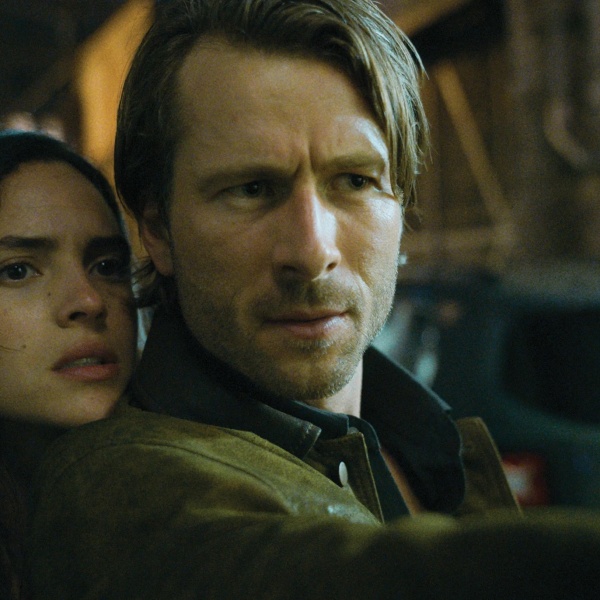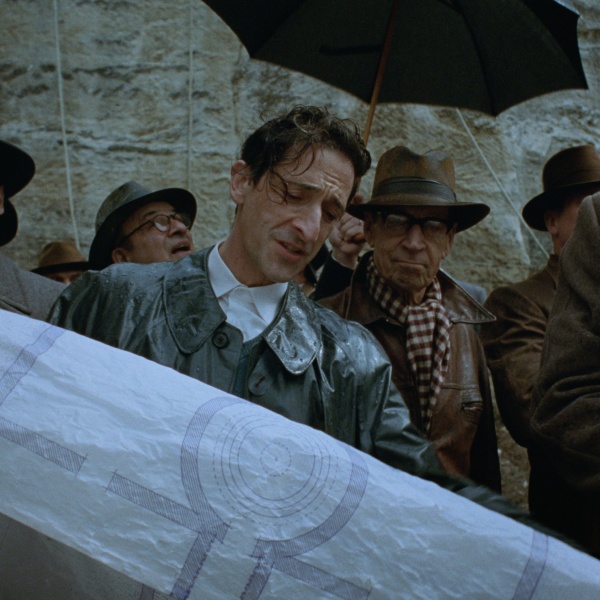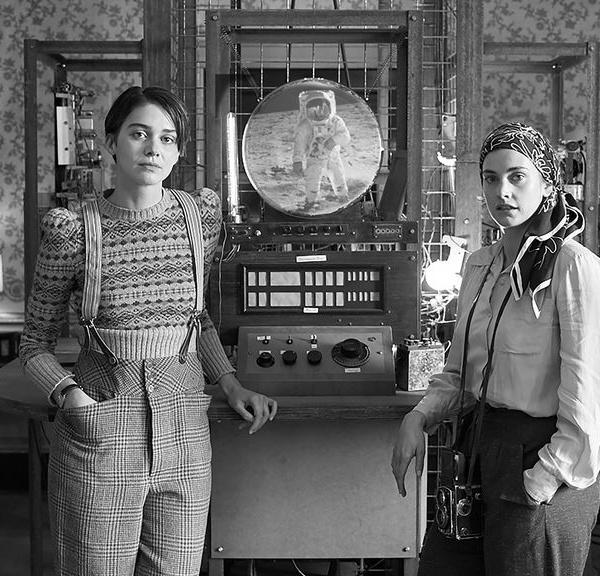“Beloved Van Gogh” is an atypical animation, but not the kind of animation that Chinese audiences are familiar with. To be precise, it is hand-painted in the form of oil painting. In terms of frame rate, it is not as smooth and smooth as common animation. In some places, it is easy to see the combination of stroboscopic and color, as well as the psychedelic effect of slide switching. People and backgrounds are like one. Although its story revolves around the death of Van Gogh, it does not have strong drama. It is more like the people around it time and time again. The world has remembered and recalled Van Gogh countless times. When he was born, he was lonely and world-weary. He was not understood and misunderstood by everyone. He can give his ear to a girl, or he can sit alone under the stars and immerse himself in the huge gray blue. When he had some influence, he ended his life with a bullet
The director also recruited 125 painters from 15 countries around the world to receive a three-week course training. In order to pursue the perfect Van Gogh style, the crew was authorized by the Van Gogh Museum, and used many authentic works of Van Gogh as reference. In the next four years, the oil painters changed the static picture into the dynamic picture to adapt to the film, which led to the world’s first oil painting film with 12 oil paintings per second and more than 65000 works in total. That is to say, every frame we see in “Beloved Van Gogh” is a “Van Gogh style” oil painting that is beautiful to bursting.
The film takes the last letter Van Gogh wrote to Theo as an opportunity to focus on the six weeks before Van Gogh’s death. At the beginning of the film, the old postman hopes that his son Amand Luland can send this letter to Theo. Amand’s unwilling attitude actually represents the psychology of a large part of the audience: people are dead, what’s the meaning of sending the letter? However, he could not resist his father’s threats and inducements, so he embarked on the journey of delivering letters. It was also in this process that Armand came into contact with some of Van Gogh’s friends before his death. Through their description of Van Gogh from their own standpoint, he gradually came into Van Gogh’s heart and realized the loneliness and misery of a genius, the regret and anger of relatives and friends for his death, and the cruelty and abuse of genius by ordinary people.
For example, Amand’s father felt heartache for Van Gogh’s death, and hated the town residents who signed the “expulsion order” to make Van Gogh suffer considerable mental damage, otherwise he would not choose to commit suicide. Amand, who was slightly considerate of his father’s anger, took the letter to find “Father Tangji”. He was a famous local pigment supplier, and witnessed the process of Van Gogh’s taking up the paintbrush at the age of 28, going to Paris to seek artistic pursuit, then creating his own style, and finally died miserably. In the eyes of countless painters, Van Gogh is a genius, and should have a good ending: fame and success – but this genius failed to hold on, but chose suicide
The film began with his ignorance and understanding of Van Gogh, and finally realized the artist’s heart (even part of it), symbolizing a completely strange world, and finally entered and understood the beauty of Van Gogh’s art. Kindness and understanding are probably the reason why human beings are human beings. Human civilization can also shine on history, keep moving forward, and urge later generations to explore the keepsake of eternal pursuit.
Looking back at my own growth, I didn’t know what art was, didn’t know who Van Gogh was, and held awe of the world, and respected the artists who left before us. It was an age when even words were divided. We are taught to love our motherland and the collective. Later, it was discovered that it was a lie and a fraud. The big net has not been broken up until today. We squander our money, give love to the restless hormone of youth, and soon find that it is just the help and help of fellow travelers.
In the face of Van Gogh, love is a helpless but warm force. The loneliness of touching Van Gogh is the reflection of human existence. People in that era did not understand or appreciate his paintings. Back today, it is easy for us to doubt from our hearts whether we can be perceived, understood and accepted by the people around us. Watching a painting and watching a movie are both lonely in nature. In Piara’s film, Van Gogh said that the most difficult thing to draw is water, because water is always flowing. Van Gogh’s life was as magical as water and as calm as water. It is not only a silent story of selling only one painting in life, but also a sobering story that reveals that no one knows it in life and the world knows it after death.
Although Van Gogh was “disappeared” from beginning to end, the characters in the film, from Dr. Gacher, the youngest daughter Margaret, the tavern waiter Edwin Ravu, to the boatman and the housekeeper, are all for Van Gogh. They are all witnesses of Van Gogh’s life, and are also the bystanders who are powerless or “indifferent” at the crucial moment. Aerman angrily shouted, “Why don’t you help Van Gogh?” But in fact, even Aerman has explained with actions: “It’s not my turn!” As for those well-known tragedies, such as “ear cutting” tragedy, sunflower masterpieces, mental illness and depression, the film has all taken them away, and turned to more detailed exploration of the behind of these words, as well as Van Gogh’s life: how he was rejected by his family, How he was not accepted by the world, how he was rejected again and again, and how he was tired again and again; He was destitute from beginning to end, and loved painting from beginning to end… Through Margaret’s words, the film revealed one of its main themes: “Why should we pay attention to his death, not his life?” But after watching the whole film, this theme seems to be difficult to achieve, because we have to admit that very few people have really approached Van Gogh, let alone long-term companionship and gentle treatment.
At the end of the film, the film changed from black and white to color. Van Gogh looked back as if he was staring at the audience. The starry night of the Rhone River was once again in front of him. Van Gogh asked, “Why can’t we touch the stars in the sky? Maybe we can reach the star through death”. The music of Starry Starry N ight gradually sounded, which made people unconsciously wet their eyes. Looking at the line of words appearing on the screen, they didn’t want to leave for a long time. Van Gogh said, “I hope my art can touch others. I hope they will say — he feels with his heart and touches the soul deeply.”
There are always some lonely souls among all kinds of people in the world, and lonely souls can also have strong resonance, although we are not people of the same era. This is another theme of “beloved Van Gogh” in addition to letting the audience understand the “tragedy of genius”: let each lonely soul feel Van Gogh’s passion for life across the times. This is the life experience Van Gogh brings us through his paintings. Looking carefully at Van Gogh’s works, we can’t see the decadence and disappointment at all. Instead, they are full of the tension of life, reflecting Van Gogh’s passion for struggling and struggling in pain.
I have seen “Sunflower” in the book before, and I still have aftershocks in my mind. This bunch of sunflowers is thickly piled up with oil paint on the upper layer of the picture; The brighter the color is, the thicker the paint is. It seems that sunflowers are competing to bloom in Van Gogh’s eyes, and the paper radiates a pleasant light that pierces darkness and loneliness. At the same time, I can also feel Van Gogh’s excitement and desire for communication. Although a little crazy, I haven’t despair or sighed. A bystander in today’s film described Van Gogh as “What a lonely person is he that a thieving crow could make his day bright.”
Van Gogh’s life was full of “failure” in the secular sense. It has neither fame nor wealth, nor love, nor poverty, and has been subjected to cold treatment and destruction. In the last two years of his life, he struggled with the huge and violent disease, and fought hard to gain the sublimity and brilliance of art for the world. If Van Gogh’s miracle is genius plus mental illness; So Van Gogh’s supreme value is his unparalleled art and his great life of martyrdom for art. The real great art is the work and all his life.
Art is not lonely. But artists are probably the ones who are always lonely. After all, the world has never been as beautiful as you.




